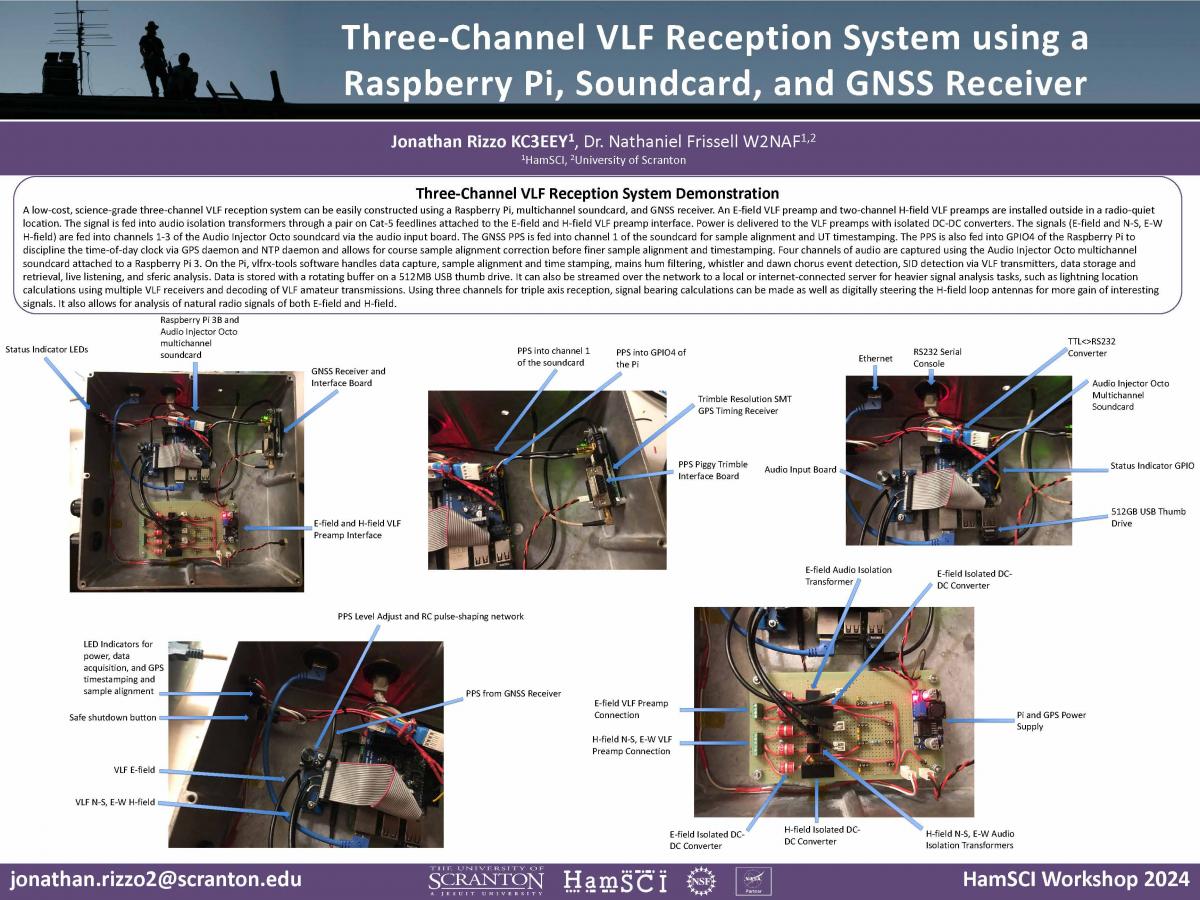| Title | Three-Channel VLF Reception System using a Raspberry Pi, Soundcard, and GNSS Receiver |
| Publication Type | Conference Proceedings |
| Year of Conference | 2024 |
| Conference Name | HamSCI Workshop 2024 |
| Date Published | 03/2024 |
| Publisher | HamSCI |
| Conference Location | Cleveland, OH |
| Abstract | A low-cost, science-grade three-channel VLF reception system can be easily constructed using a Raspberry Pi, multichannel soundcard, and GNSS receiver. An E-field VLF preamp and two-channel H-field VLF preamps are installed outside in a radio-quiet location. The signal is fed into audio isolation transformers through a pair on Cat-5 feedlines attached to the E-field and H-field VLF preamp interface. Power is delivered to the VLF preamps with isolated DC-DC converters. The signals (E-field and N-S, E-W H-field) are fed into channels 1-3 of the Audio Injector Octo soundcard via the audio input board. The GNSS PPS is fed into channel 1 of the soundcard for sample alignment and UT timestamping. The PPS is also fed into GPIO4 of the Raspberry Pi to discipline the time-of-day clock via GPS daemon and NTP daemon and allows for course sample alignment correction before finer sample alignment and timestamping. Four channels of audio are captured using the Audio Injector Octo multichannel soundcard attached to a Raspberry Pi 3. On the Pi, vlfrx-tools software handles data capture, sample alignment and time stamping, mains hum filtering, whistler and dawn chorus event detection, SID detection via VLF transmitters, data storage and retrieval, live listening, and sferic analysis. Data is stored with a rotating buffer on a 512MB USB thumb drive. It can also be streamed over the network to a local or internet-connected server for heavier signal analysis tasks, such as lightning location calculations using multiple VLF receivers and decoding of VLF amateur transmissions. Using three channels for triple axis reception, signal bearing calculations can be made as well as digitally steering the H-field loop antennas for more gain of interesting signals. It also allows for analysis of natural radio signals of both E-field and H-field. |
| Refereed Designation | Non-Refereed |
| Full Text |

